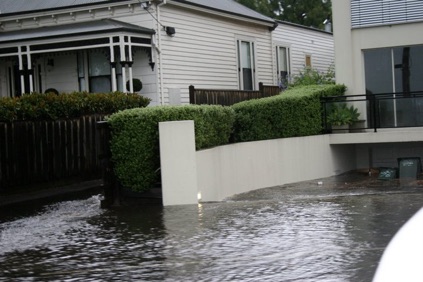SAVE WILLIAMSTOWN
Our Utilities: Water, Sewerage, Electricity, Gas and Telephone Services

SAVE WILLIAMSTOWN
Our Utilities: Water, Sewerage, Electricity, Gas and Telephone Services
Large scale developments have the potential to impact on utilities such as Council Services, Water, Sewerage, Electricity, Gas and Telephone Services.
DEVELOPER CONTRIBUTIONS to Council to offset costs to ratepayers
Developments such as Former Port Phillip Woollen Mill Site impose enormous strain on the community. In Victoria the developer contributions have been minimal but NSW imposed much more realistic developer contributions (sometimes up to $34,000 per bedroom) reflecting the community sentiment that if the developer makes profit from building huge developments, the individual ratepayers in those municipalities should not pick up the tab for the cost of new or improved infrastructure and commuinity service requirements. Recent changes in NSW impose a limit of $20,000 per dwelling. If translated to the Former Port Phillip Woollen Mill Site this would mean $8.25 million would be paid by the developer to Hobsons Bay City Council. If the infrastructure tax were at the higher levels previously imposed in Sydney the Former Port Phillip Woollen Mill Site would be paying $42 million in infrastructure tax which would tip the balance to providing community benefits as mixed development in the site.
See NSW Developer contribution minute from City of Sydney Minutes June 2010 as moved by Lord Mayor Clover Moore MP

“The State Government has announced major changes to the section 94 development contributions framework that will slash development contributions to all councils. The changes, announced without any consultation with local government as part of the State Budget, will have an especially devastating effect in our urban renewal areas such as Green Square.
The changes are:
•Section 94 development contributions levies for residential properties under s94 are now capped at a maximum of $20,000 per dwelling or lot. This cap came into immediate effect on Monday, 7 June 2010 and overrides any previous approvals to exceed the $20,000 threshold.
•A restriction on the types of infrastructure that can be funded via s94 levies to ‘essential infrastructure’.
Council will be forced to fund any shortfalls in infrastructure funding from other revenue sources such as borrowings and/or increases in general rates; or through a ‘Special Variation’ to rates. We can only apply a ‘Special Variation’ to cover any shortfall if we receive permission from the Independent Pricing and Regulatory Tribunal (IPART).
The Government has not yet defined ‘essential infrastructure’. I share the concerns of the Local Government and Shires’ Associations that the Government could restrict levies to the funding of land acquisition (for open space and community facilities), roads, stormwater and transport facilities. If these changes go ahead, the City will be prevented from collecting local contributions to fund recreational, civic or community facilities, which will instead need to be funded from other revenue sources.
The changes relating to the new definition of ‘essential infrastructure’ are due to come into effect on 1 July 2010 and all councils will be required to prepare new contributions plans to meet these changes. As Council recently reviewed our s94 contributions plan, valuable resources and staff time will now be wasted updating this plan.
I strongly oppose these changes and the manner in which they were made. The State Government has not consulted with councils and does not appear to understand the financial impact these changes will have on councils, ratepayers and local communities, particularly in our important urban renewal areas.
The Government rushed these changes through at the last minute, without adequate planning or thought. No evidence has been provided these changes will improve housing affordability or that $20,000 is an appropriate threshold and IPART has not yet released Guidelines, method or procedures for considering ‘Special Variations’ to enable Councils to exceed the cap.
The new levy cap represents a significant change to our current development contributions system. Even if IPART approves a Council’s contributions plan allowing for fees of more than $20,000, the developer is still only required to pay $20,000 and any remainder must be funded by ratepayers, transferring part of the financial burden of development from developers, to reap the rewards, onto local communities.
For the City, this means levies for 3 bedroom dwellings will be reduced by up to $7,000 per dwelling, particularly in the Green Square area. This will have major implications for our planned program of community infrastructure, which is vital if we are to meet the demands of the growing population in that area. Green Square, as well as our other urban renewal sites, needs significant investment in new community and cultural facilities and other infrastructure.
In the Green Square Town Centre alone, we are committing $103.2 million for infrastructure. Without adequate funding, including through development contributions, our ability to fund these vital community facilities will be curtailed. Local communities desperate for adequate community and other infrastructure will be the ones to lose out unless the Government reverses this poorly developed and rushed policy.
RECOMMENDATION
It is resolved that Council:
(A)oppose the Government’s cap on section 94 development contributions at $20,000 per dwelling or lot, which will restrict Council’s ability to fund vital community infrastructure; and
(B)request that the Government include community infrastructure in its forthcoming definition of ‘essential infrastructure’.
COUNCILLOR CLOVER MOORE MP
Lord Mayor
-----------------------------------------------
CLIMATE CHANGE

With climate change and rising sea levels, will the old storm drainage and sewerage systems in the peninsula experience more back flow pressure. What remediation of old infrastructure will the developer be required to do. Will realistic developer contributions be sought? In NSW it is common for new residential developments such as the Former Port Phillip Woollen Mill Site to be required to pay up to $34,000 per bedroom, so what will Evolve be asked to pay?

In August 2010 a ruling by VCAT put in doubt applications for dwellings which could be effected by rising sea levels. (See Herald Sun Article)
"This decision effectively rules out almost any developments in existing commercial and residential areas that may be subject to sea level rises within the next 90 years - even if the buildings are above the flood level," he (MP Craig Ingram) warned.
Government reports reinforce sea level rise threat
http://www.portphilliprising.org/governmentreport
The urgency of sea level rise is already getting more attention with two recent Federal government reports discussing the impacts. Both the Climate science update and the assessment of Climate Change risks to Australia's coasts, say 2 metres of sea level rise or more by the end of the century is possible.
The second report released on the weekend says at least 250,000 homes are under threat and more than $60 billion worth of residential property faces flooding.
In addition 120 ports, 1,800 bridges, power stations, water treatment plants and airports close to the coastline are also under threat.”
We will need engineers in any of these service areas to help us argue about the impact of new apartments on demand and supply of utilities.
Fears rise for Greenland ice mass - Global sea levels up seven metres in 100 years.

What would a 7 metre rise in sea levels in the next 100 years mean for Williamstown.....? The Greenland ice mass could be the beginning of an inevitable process worldwide with the increased temperatures of climate change. The development of the Former Port Phillip Woollen Mill Site could be a big investment in a “temporary” building!
The Age
Suzanne Goldenberg, Washington
August 12, 2010 - 3:00AM
“THE entire ice mass of Greenland will disappear if temperatures rise by as little as 2 degrees, with severe consequences for the rest of the world, a panel of scientists has warned the US Congress.
Greenland shed its largest chunk of ice in nearly half-a-century last week, and faces an even grimmer future, according to Richard Alley, a geosciences professor at Pennsylvania State University.
''Sometime in the next decade we may pass that tipping point which would put us warmer than temperatures that Greenland can survive,'' Professor Alley told a briefing in Congress, adding a rise in the range of 2 to 7 degrees would mean the obliteration of Greenland's ice sheet.
The fall-out would be felt thousands of kilometres from the Arctic, unleashing a global sea-level rise of seven metres, he warned. Low-lying cities such as New Orleans would vanish. ''What is going on in the Arctic now is the biggest and fastest thing that nature has ever done,'' he said.......
http://www.theage.com.au/world/fears-rise-for-greenland-ice-mass-20100811-11znz.html
Please email

We need help with the impact on existing infrastructure, utilities and services......
DEVELOPERS MUST RESPECT THE CHARACTER OF OUR HISTORIC CITY
WE MUST HAVE COMMUNITY INVOLVEMENT IN PLANNING....
The cultural and historical significance of Williamstown should not be underestimated, it starts long before the settlement of 1835 with the people of the Kulin Nations inhabiting the Point Gellibrand Peninsula for many centuries. The new arrivals of 1835 came from Tasmania by sea and chose the sheltered natural harbour to land and build their town, King William’s Town, later becoming Williamstown. Many early public buildings and homes still grace the town and the maritime and shipbuilding industries still remain after nearly two centuries.